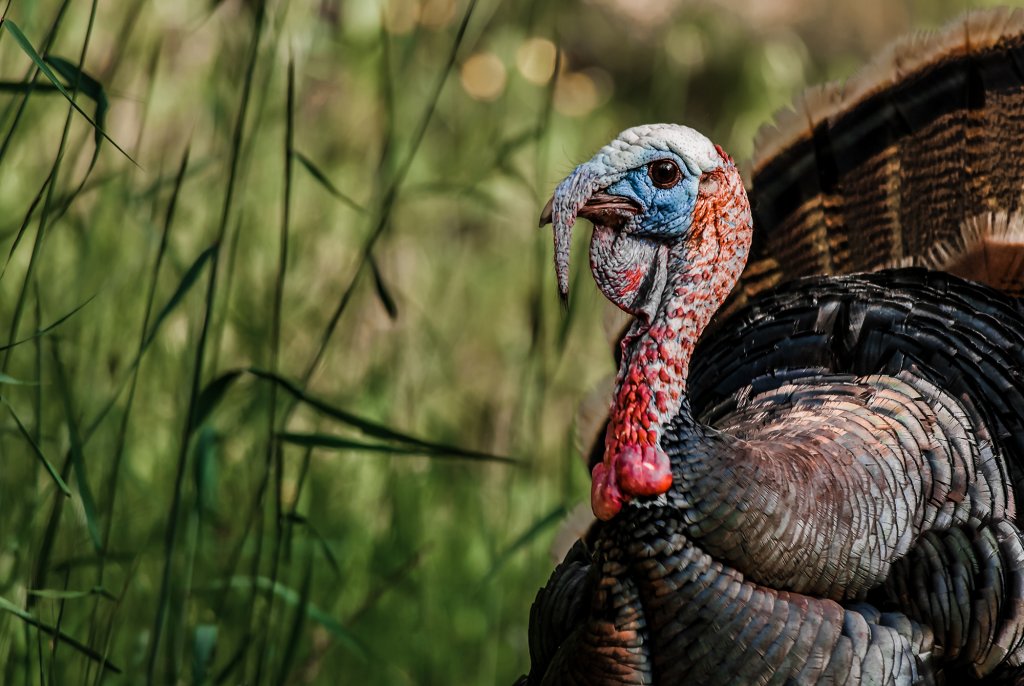Turkeys are amazing birds with colorful feathers and interesting body parts. Are you curious about turkeys and their special features?
One aspect is the beard they sometimes have. Sometimes, you might see a long, hair-like thing sticking out from a turkey’s chest. This is called a beard, a sign of strength and maturity.
But what about young turkeys? Do they have beards, too? We’ll know more about turkeys and their beards.
We’ll learn about how beards grow and what they mean for these birds. We’ll also find if Jakes, the young turkeys, have beards just like the older ones.
Let’s see the secrets of beards and find out if Jakes can be called bearded turkeys.
Special Traits of Wild Turkeys
Wild Jake Turkeys are truly remarkable creatures, showcasing a range of unique features that set them apart in the avian world.
Among these, their energetic wattles and noodles, which are fleshy appendages on the head, are perhaps the most recognizable.
During the breeding season, these features come alive with a breathtaking array of colors, including shades of pink, red, white, and blue.
Understanding Turkey’s Beards

Delving into Jake Turkey’s growth patterns reveals more than just their physical charm. Emerging as early as five months, these beards grow fascinatingly, providing insights into a Jake turkey’s journey to maturity.
As they grow older, their beards continue to develop, adding nearly five inches in length each year. This growth pattern provides biologists with a rough method for aging male turkeys.
Younger birds, typically one-year-olds, tend to have shorter beards, measuring just a few inches. In contrast, older toms can boast beards in the double digits.
Beard Growth in Turkeys
The growth of turkey beards is a fascinating aspect of their development. This distinctive feature begins to sprout when turkeys are still in their juvenile stage, at just five months old.
From there, it continues to grow throughout the bird’s life, with an average annual growth rate of nearly five inches. This continuous development provides a unique window for biologists to estimate a turkey’s age.
Factors Affecting Beard Length
While genetics play a role in determining beard length, environmental factors also significantly influence it. One of the key factors is the terrain in which turkeys inhabit.
Those dwelling in rocky terrain tend to have shorter beards than their counterparts foraging in flat, sandy areas. Beard rot, a condition resulting from vitamin deficiency, can lead to the deterioration or shearing of a turkey’s beard.
Bearded Hens A – Rarity
Among the fascinating phenomena within the turkey population is the occurrence of bearded hens.
While this trait is more commonly associated with male turkeys, approximately 10 percent of hens also possess a beard, albeit a much smaller and more soft version.
The exact reasons some females develop beards while others do not remain a subject of curiosity and study among researchers.
Conservation and Bearded Turkeys
The presence of bearded hens is a phenomenon that can be influenced by conservation efforts aimed at Wild Turkey populations.
In the mid-1900s, wildlife biologists undertook extensive trapping and relocation initiatives to restore turkey populations that had been severely depleted due to hunting and habitat loss.
As a result of these efforts, Wild Turkeys made a remarkable recovery, establishing populations in every state across the United States except for Alaska.
Identifying Male Turkeys
Male turkeys, known as toms, possess distinctive physical features that set them apart from their female counterparts. One prominent indicator is their cool plumage.
Toms typically show bright, iridescent feathers, often displaying bronze, green, and copper shades. Their tail feathers are fan-shaped and bordered with a black band, making them highly recognizable.
Spotting Male and Female Turkeys
Differentiating between male and female turkeys can be easy once you know what to look for. Males, or toms, are larger, have more colorful plumage, and exhibit distinguishing facial features like the snood and wattles.
They also possess sharp spurs on their legs, a weapon they use in competition with other males. In contrast, female turkeys, known as hens, are generally smaller and have less bright plumage.
Beards – Nature’s Sign of Strength
One of the most notable features of male turkeys is their beard. This unique characteristic is a tuft of hair-like feathers that protrude from their chest. It serves as a sign of maturity and vitality.
The length of a turkey’s beard can vary, with older toms often boasting longer and more impressive beards. It’s a key indicator for hunters, helping them determine the age and suitability of a turkey for harvest.
Turkeys – Their Amazing Features
Turkeys are fascinating birds with a range of incredible attributes. Their bright plumage, complex courtship displays, and unique vocalizations make them an amazing species to observe.
While male turkeys exhibit cool physical features like snood, wattles, and impressive beards, female turkeys play a crucial role in nesting and raising the next generation.
Understanding and appreciating these remarkable features enriches our connection with these splendid birds in the natural world.
Conclusion
A Jake can be considered a bearded turkey but with a catch. All Jakes are young male turkeys, and they do have beards.
But these beards are shorter and less developed than those on older males, known as toms. So, while Jakes sport beards, they’re less impressive than those on the big, fully-grown toms.
So, if you’re out in the wild and spot a turkey with a beard, it could be a Jake. But if that beard is longer, it’s more likely a mature tom.
Keep observing, and you’ll become quite the expert at telling turkeys from their older, more experienced counterparts.

